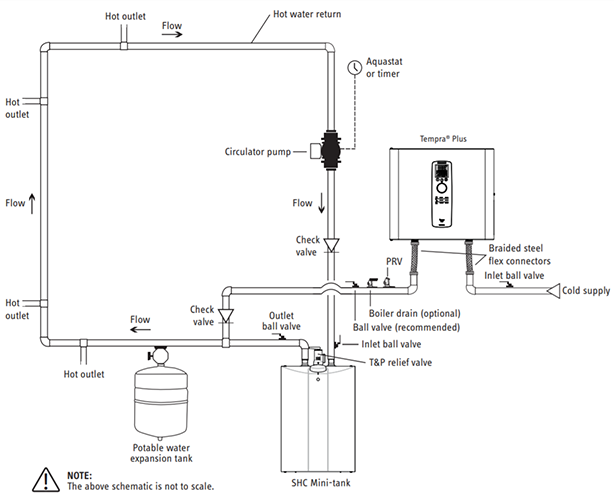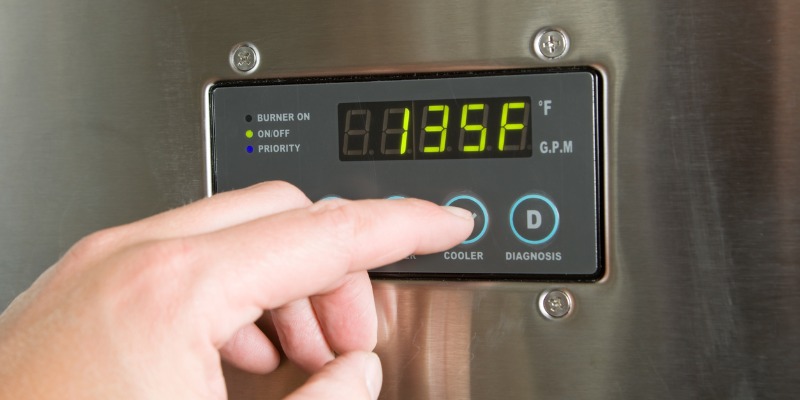Yes, you can add a tankless water heater to an existing system. This upgrade can improve efficiency and reduce energy costs.
Tankless water heaters are gaining popularity for their energy efficiency and endless hot water supply. Unlike traditional water heaters, they heat water on demand, eliminating the need for a storage tank. This system can seamlessly integrate with your existing plumbing, providing a reliable hot water solution.
Homeowners often seek this upgrade for benefits like space savings and lower utility bills. Before making the switch, consider your hot water needs, the size of your home, and your current plumbing setup. Proper installation by a qualified technician ensures optimal performance and longevity. Embracing a tankless system can enhance your home’s comfort and efficiency significantly.

Credit: www.e-tankless.com
Page Contents
Introduction To Tankless Water Heaters
Tankless water heaters offer many advantages for homeowners. They provide instant hot water on demand, eliminating the need for a storage tank. This helps save space and reduces energy costs. Since they heat water directly, there’s no waiting for a tank to fill up.
Another benefit is the long lifespan of tankless units. They can last over 20 years with proper maintenance. This is much longer than traditional heaters, which usually last about 10 to 15 years.
Compatibility with existing systems can vary. Many homes can integrate tankless heaters easily. It’s best to consult a professional to ensure a proper fit.
Assessing Your Current System
Understanding your water demand is crucial. Count all the fixtures that use hot water. This includes sinks, showers, and appliances. Knowing peak usage times helps too.
Inspect the existing infrastructure before making changes. Check the pipes and connections for any leaks or damage. Ensure the system can handle the new heater. Consider the size of the tankless water heater needed. This depends on your household’s hot water needs.
| Fixture | Water Demand (GPM) |
|---|---|
| Shower | 2.5 |
| Washing Machine | 2.0 |
| Dishwasher | 1.5 |
| Kitchen Sink | 1.0 |
Choosing The Right Tankless Heater
Choosing the right tankless water heater is important. Gas and electric models both have benefits. Gas heaters heat water faster. They also provide hot water during power outages. Electric heaters are easier to install and maintain. They take up less space, too.
Sizing is a key factor in selecting a heater. The size depends on your household needs. Calculate the total flow rate in gallons per minute (GPM). This number helps find the right unit. A larger family needs a higher GPM. A smaller household can use a lower GPM.
| Model Type | Advantages |
|---|---|
| Gas | Faster heating, works during outages |
| Electric | Easy to install, space-saving |
Installation Considerations
Adding a tankless water heater to your system requires careful planning. Space requirements are crucial. These units are compact but need proper ventilation. Ensure there is enough room for installation and maintenance.
Plumbing modifications may be necessary. Existing pipes might need adjustments to fit the new system. Consider hiring a professional for this part. They will ensure everything works correctly.
Electrical upgrades might also be required. Tankless heaters often need a higher voltage. This ensures they operate efficiently and safely. Check your current electrical system before installation.
Cost Analysis
The initial investment for a tankless water heater can vary. Costs typically range from $1,000 to $3,000. This includes the unit and installation. Consider the size and brand of the heater. Professional installation may raise costs further.
Long-term savings can be significant. Tankless water heaters use less energy. They only heat water when needed. This can save up to 30% on energy bills. Over time, these savings may offset the initial investment. Many homeowners see a return on investment within 3 to 5 years.

Credit: www.handybros.com
Permitting And Compliance
Local regulations can vary greatly. Always check your city or county rules. Some areas require permits for a tankless water heater. Other places might have specific installation requirements.
Safety standards are crucial for any water heater system. Make sure the heater meets local codes. This ensures safe operation and prevents hazards. Using a certified installer can help with compliance.
Here are some important points:
- Check local codes before starting any installation.
- Obtain necessary permits to avoid fines.
- Ensure compliance with safety standards.
- Hire a licensed professional for installation.
Professional Vs. Diy Installation
Choosing between professional and DIY installation can be tough. Each option has its own pros and cons.
| Option | Pros | Cons |
|---|---|---|
| Professional Installation | Expert knowledge and experience | Higher costs |
| DIY Installation | Lower costs and hands-on experience | Risk of mistakes and safety issues |
Finding qualified installers is very important. Look for licensed professionals with good reviews. Ask for references and check their past work. This helps ensure a smooth installation process.
Maintenance And Care
Regular maintenance is key for a tankless water heater. Check the filters every month. Clean them to ensure proper functioning. Flushing the system once a year is important. This removes mineral buildup and keeps the heater efficient.
Common issues may arise. If the water temperature is inconsistent, check the power supply. A faulty thermostat could also be the cause. Error codes on the display can help identify problems. Refer to the manual for specific codes.
If water flow is low, inspect the inlet filter. Cleaning it may solve the issue. If problems persist, consult a professional for further assistance.
Environmental Impact
Using a tankless water heater can greatly improve energy efficiency. These heaters only heat water as needed. This can save energy and reduce monthly bills. They take up less space, making them ideal for small homes.
Switching to a tankless system can help in reducing carbon footprint. Less energy use means fewer greenhouse gas emissions. This change supports a cleaner environment. Many people choose tankless heaters for this very reason.
| Feature | Traditional Heater | Tankless Heater |
|---|---|---|
| Energy Usage | Constant heating | On-demand heating |
| Space Required | Large | Compact |
| Carbon Emissions | Higher | Lower |
Final Thoughts
Adding a tankless water heater can improve energy efficiency. It heats water only when needed. This can lower utility bills significantly. However, the upfront cost may be higher than traditional systems.
Consider the space requirements. Tankless heaters are compact but may need special installation. They often require upgraded gas lines or electrical systems.
Evaluate your hot water needs. Large families might benefit more from a tank system. Smaller households may find tankless options ideal.
Understanding your existing system is crucial. Some systems may not support tankless heaters easily. Always consult with a professional before making changes.

Credit: www.chattanoogawaterheaterrepair.com
Conclusion
Upgrading to a tankless water heater can enhance your existing system. It offers energy efficiency and endless hot water. Ensure compatibility with your current setup for a smooth installation. Consulting a professional can provide the best guidance. Embrace the benefits of modern technology for a more efficient home.
